American Beech Tree
I’m long overdue for another post about trees, and late autumn is a good time to look at a prominent species.
If you’ve been walking through woods recently, you’ve most likely noticed a certain tree that seems to hold onto its leaves longer than others. The dry tan leaves on younger trees may stay on throughout the winter.
If this looks familiar, then you already have been acquainted with the American Beech, a deciduous tree found in the eastern United States and southeastern Canada. Historically, many thousands of years ago, forests of this tree may have stretched across the whole North American continent.
The leaves on the American Beech are simple and slightly toothed, with noticeable veins.
Mature tree trunks of this species have smooth, silvery bark…which attracts human attention.
…the American Beech bark is an attraction for vandals who carve names, dates, gang symbols, and other material into it. One such tree in Louisville, Kentucky, in what is now the southern part of Iroquois Park, bore the legend “D. Boone kilt a bar” and the year in the late 18th century. This carving was authenticated as early as the mid-19th century, and the tree trunk section is now in the possession of The Filson Historical Society in Louisville.
Mature American Beeches can grow up to 120 feet tall. I’ve seen a disproportionate amount of older hollow Beech trees fallen in the forests.
American Beech can take up to 40 years to begin producing seeds. Large crops are produced by 60 years and the tree’s total lifespan may be up to 300 years.
Young Beeches throw out thin branches early in their lives. This tree prefers shade, and grows well in mixed Beech-Maple climax hardwood forests. It is vulnerable to Beech Bark Disease, unfortunately.
As I discussed in a previous post, a type of Woolly Aphid- the Beech Blight Aphid– can inhabit Beeches, but they do minor (if any) damage.
The transformation from spring’s vibrant green leaves to winter’s dry rattling tan ones is interesting to behold.
American Beech is an important tree in forestry. The wood is heavy, hard, tough and strong, and until the advent of power tools in the 20th century, lumbering beech trees were often left uncut to grow. As a result, many areas today still have extensive groves of old beeches that would not otherwise occur. Today, the wood is harvested for uses such as flooring, containers, furniture, handles and woodenware.
Here’s an elderly Beech that I spotted in a cemetery one day. In the forests, some blow down before they get this huge.
Keep an eye out for American Beeches!


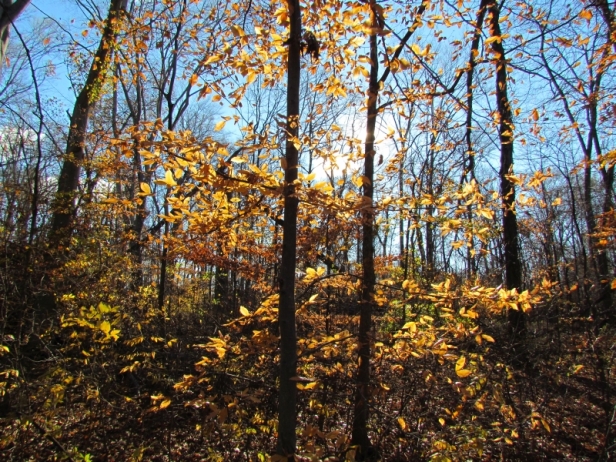







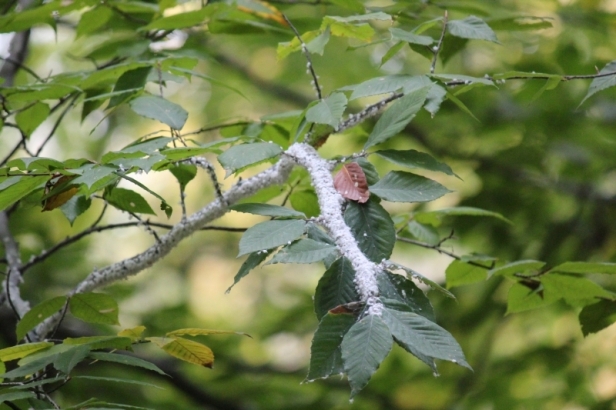
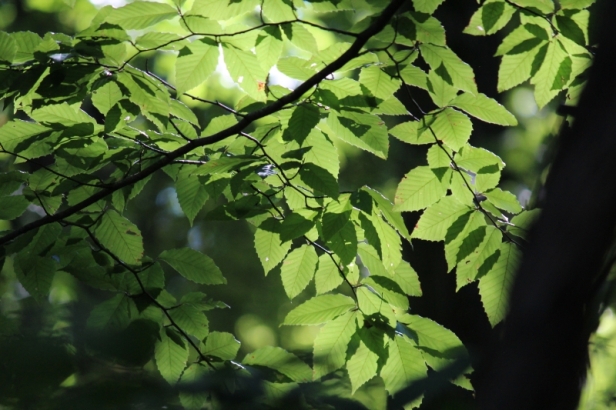

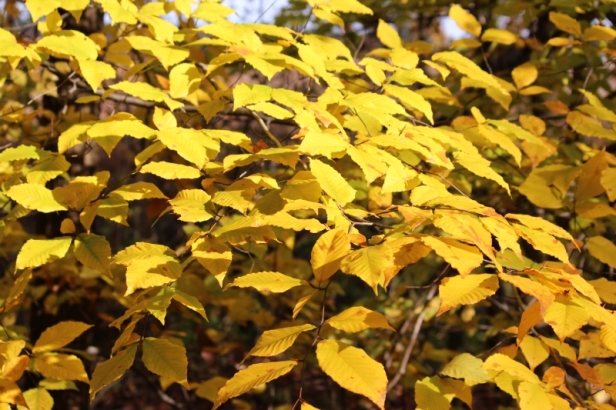

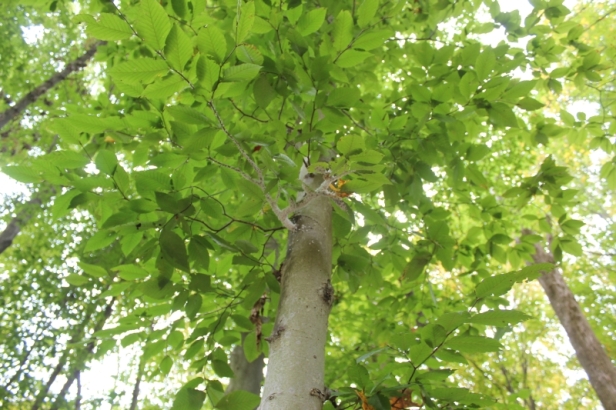
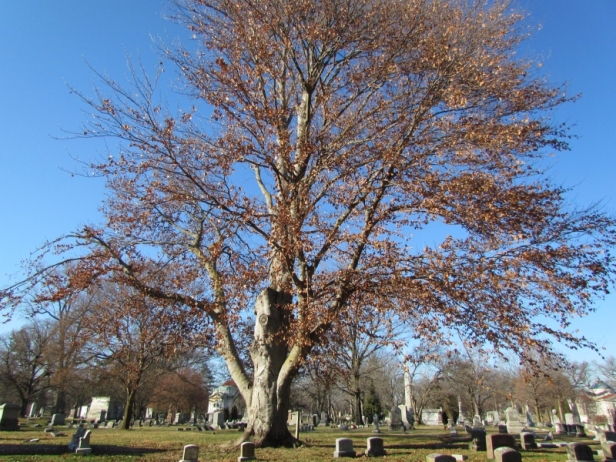
Enjoyed your post! It’s hard not to be fascinated by the Beech leaves as they highlight the late fall and winter woods.
They really stand out, don’t they Robert!
There a few beech trees in our woods – always beautiful, especially in the spring when the young leaves unfurl and in the fall when they turn golden.
I love it when the young Beeches mature and their trunks are that smooth silver skin…what a stand-out tree!
A beautiful tree.
Indeed, Pat!
There were two large, old beeches on my dad’s property. This brought back great memories of summer afternoons in the shade underneath.
That’s great, Patti! 🙂
Beeches are among my favourite trees, especially when they constitute a beech wood.
I saw where the European Beech is considered native to southern Britain but in other areas it can be seen as an invasive tree, Tootlepedal- I bet you have some beautiful Beech forests there!
I love beech trees but I’m seeing an awful lot of beech bark disease and dead trees, virtually everywhere I go.
That’s terrible, Gardener- this past autumn saw a big Beech Blight Aphid outbreak here, but luckily I haven’t noted any diseased trees lately.
I saw twigs with wooly gray stuff on them in late summer. Wondered what was going on. Thanks for providing the answer!
Sure, Mary! Pretty crazy that it was bugs, wasn’t it?
Very interesting, and lovely pics. That last photo is an amazing old tree! It seems to be like our own beech in some ways – the leaves tend to stay on a beech hedge until spring, and then the leaves are shed when the new ones push through. However, the configuration of the leaves is different.
Thanks Jo! I’m wondering if that’s a different type of Beech in the cemetery…there’s often a real variety of trees planted there.
Hi Seasons, Learned a lot about the American Beech by reading your fine post today! Gee, that big tree in the cemetery is sure a grand one. Have a super Thurs. tomorrow!
Many thanks, Wildlifewatcher! 🙂
Fantastic post. Beach Bark disease is decimating our beech populations in New Brunswick. A real shame, such a beautiful tree. Ever notice that the leaves on a beech don’t fall off in the winter, but in the following spring? I believe it’s caused by a particularly strong abscission layer in the petiole. Occurs in some Oaks as well 🙂
I like how the leaves hang around until spring, Maritime- that’s rather unique!